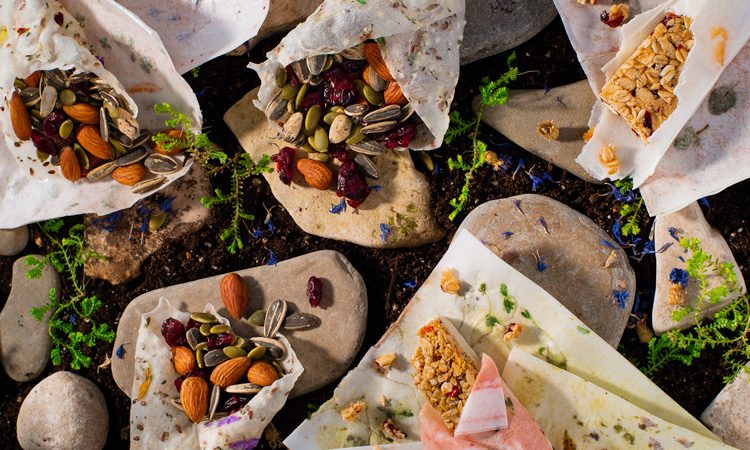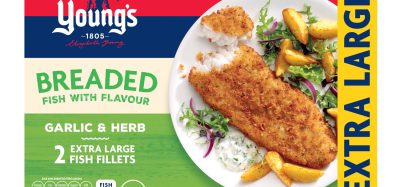Top 10 food and beverage trends for 2020, according to THP
- Like
- Digg
- Del
- Tumblr
- VKontakte
- Buffer
- Love This
- Odnoklassniki
- Meneame
- Blogger
- Amazon
- Yahoo Mail
- Gmail
- AOL
- Newsvine
- HackerNews
- Evernote
- MySpace
- Mail.ru
- Viadeo
- Line
- Comments
- Yummly
- SMS
- Viber
- Telegram
- Subscribe
- Skype
- Facebook Messenger
- Kakao
- LiveJournal
- Yammer
- Edgar
- Fintel
- Mix
- Instapaper
- Copy Link
Posted: 29 October 2019 | Sam Mehmet (New Food) | No comments yet
THP has released its fifth Flavour & Trend Forecast for 2020 – an annual report highlighting the latest ingredients, cooking techniques and culinary ideas driving innovation and disruption within the food and beverage industry.


THP has released its fifth Flavour & Trend Forecast for 2020 – an annual report highlighting the latest ingredients, cooking techniques and culinary ideas driving innovation and disruption within the food and beverage industry.
For 2020, THP’s culinary team have identified 10 key global trends, many with a focus on sustainability and conscious consumerism.
Here are the 10 trends taken from the report:
1. Uncultivated botanicals
Edible flowers and botanicals like wild sorrel, juniper, maple blossoms, and balsam add a delicate and unique sweetness to a dish and are predicted to boom in 2020.
2. Tartness
Sour foods are growing in popularity because of exactly what they are not: sweet. Thanks to globalisation, more palates are beginning to appreciate flavours from around the world, like vinegar, tamarind, and other ingredients that provide a distinctly tasteful tartness.
3. Desseralité
This is the intersection of desserts and naturality. In line with consumer trends leaning toward the inclusion of simple, whole ingredients, Desseralité, or desserts in their most natural form, prove that you can make delicious and healthy desserts without the excessive use of dough, cream, sugar, and mousses to complicate a dish.
4. Zero-waste cooking
Foodprints (the environmental impact of food) are swaying consumer purchases. Globally, it is reported that 570,000 tonnes of fresh, useable meat and poultry products get thrown away every year. What most consumers do not realise is that these discarded products can be used in new, sustainable and creative ways to elevate everyday dishes and delicacies, and 2020 is expected to see a clearer focus on this.
5. Vietnamese cuisine
Young westerners are on an Asian-inspired food kick, and they are looking beyond mainstream dishes like banh mi sandwiches and pho that have proliferated the industry. Inspired by street food and fusions, they are on the hunt for rising Vietnamese cuisine stars like bún bò huế – a popular soup made with rice vermicelli and beef – and egg coffee – a drink traditionally prepared using egg yolks and condensed milk that give it a deliciously creamy flavour.
6. Mood food


Mood food is predicted to be a prominent trend in 2020 according to the new report from THP.
The creation of top food psychologist and professor, Charles Spence, ‘Gastrophysics’ is a new way of dining founded on the idea that food can impact the way we feel (not to be mistaken with eating our feelings).
Set menus are popping up around the globe that offer a catered selection of foods that will shift your mood in various directions.
7. Wood-fire cooking
2020 is predicted to be the year that chefs in restaurants around the globe will rediscover that grilling over a wood fire makes food taste so much better, and going back to traditional cooking techniques is not a bad idea.
8. Edible packaging


Edible packaging is just one of the sustainable trends predicted to be popular next year…
According to the report, conscious consumers are looking for great products that do not harm the earth, and food and beverage packaging makes up much of the plastic ending up in our oceans and landfills.
Brands that will win in this space are the ones who adapt to shifting consumer lifestyles and preferences.
9. Portable snacks
Once seen as guilty pleasures, snacks are dramatically reshaping eating as we once knew it. Consumers are moving away from three square meals a day, toward satisfying their hunger on-the-run. Because of this, they are turning to functional snacks that fill in the gaps and give their bodies what they are lacking.
10. Tribal roots
Looking beyond farm to fork, Michelin star restaurants around the globe are seeking traditional indigenous ingredients from some of the oldest civilizations. They are searching for the strong influences of South American cooking – superfoods like cucuaco, cassava, bijao leaves, cocona, acaï, aguaje, and maracuya are examples of ingredients that are gradually becoming mainstream.


Michelin star restaurants will be searching for strong South American influences next year, such as the Brazillian national dish pictured here: feijoada, in yucca with rice.
“Our Flavour & Trend Forecast helps our customers continue to be the best in the world at what they do,” said Dana Speers, classically trained chef, award-winning television producer, and THP’s Director of Operations, Creative and Culinary. “It provides our customers with fresh, innovative ideas for showcasing their products in new and exciting ways. Founded on research conducted at the global level, the report ensures our customers are keeping a finger on the pulse of upcoming trends, enabling them to capture key insights that often inform their product research and development strategy.”
“This year’s report is much more immersive than years prior. Marketers can taste the trends for themselves and learn best practices, enabling them to develop forward-thinking brand and marketing strategies,” added Brittany Watson, THP’s Marketing Specialist
Related topics
Flavours & colours, Free From, Natural, New product development (NPD), Packaging & Labelling, Sustainability, Technology & Innovation, The consumer








